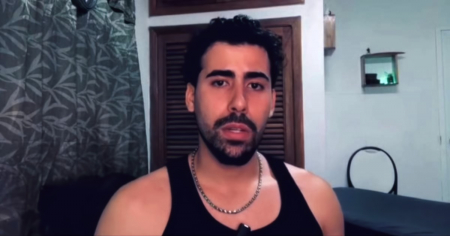During the past decade, the Cuban state allocated foreign currency from foreign trade and collected remittances to finance the construction of hotels and, apparently, to pay off debts, according to available data from the Balance of Payments.
The Balance of Payments (BP), according to the economic encyclopedia Economipedia, is "a financial document that records trade operations, services, and capital movements of a country with the outside world."
It is essentially made up of two sub-accounts: the Current Account (CC) and the Capital and Financial Account (CKF). The first reflects the determining relationship with the external sector, while the second indicates whether the destination of these flows is related to debt issues or foreign investments in the case of a surplus, or the nature of financing in the case of a deficit.
On its part, the CC collects the balances of the trade balance, namely exports and imports, which is the main source of foreign exchange for any country that is not a source of such. It also includes the balance of primary income transfers, that is, the remittance of profits and salary payments made by foreign companies operating in the country under analysis, as well as the collections of national companies operating abroad. Lastly, there are current transfers, which are basically remittances.
The use of the BP by specialists, analysts, and officials allows for the diagnosis of the flows between economies and the outside world, serving as a basis for analyzing and drafting economic policies and making decisions.
In the case of Cuba, a country whose institutions lack transparency, the government's policies and use of public funds are not reported in a timely, systematic, and clear manner; thus, the BP also serves to reveal what the government hides or manipulates.
Thus, by conducting an informed reading of the BP, clear insights about the Cuban economy emerge. The data reveals that between 2010 and 2019, Cuba had positive net exports, meaning its exports were sufficient to cover all its imports, leaving a surplus. The country earned export revenues ranging from 1.7 billion to 3.9 billion USD annually.
On the other hand, the remittance balance was positive in almost every year, reaching 1.8 billion USD, with even José Luis Rodríguez, the former minister of the Castro regime, mentioning 2 billion.
Both figures, net exports and remittances, represent the foreign currency income that Cuba received, which the State had available to, like any nation, pay debts, invest, and compensate foreign companies operating in the country.
Between 2010 and 2019, the State allocated funds to pay foreign companies operating in Cuba, ranging from 900 to 1,900 million dollars each year, according to official data collected in the BP from that period. During those years, the French conglomerate Bouygues was carrying out hotel construction projects in Cuba, such as the renovation of the Packard, inaugurated in 2018; the Manzana, inaugurated in 2017, and the construction of Laguna del Este V, as noted on the company's website. Therefore, this last one was among the foreign companies that received payments from Cuba.
Another part of the currency, according to official data, was allocated to finance investments. What stands out the most about these investments is that the majority was concentrated in hotels, experiencing the most significant growth between 2015 and 2019. Among them is the K23 hotel, which has been under construction since 2018, and is being built with 100 percent Cuban capital, as reported by the Cuban magazine Juventud Técnica in May 2023.
After paying foreign companies operating on the island and financing investments, the figures from the Balance of Payments indicate that the state had between 1.2 and 3.1 billion dollars per year left to pay debts or invest abroad. The first option seems more probable, as there are no signs that Cuba is making significant investments overseas, and the National Office of Statistics and Information (ONEI), the official body responsible for compiling and disseminating the Balance of Payments, does not publish the portion that would provide this information for the observed years.
Filed under:
Opinion article: Las declaraciones y opiniones expresadas en este artículo son de exclusiva responsabilidad de su autor y no representan necesariamente el punto de vista de CiberCuba.
